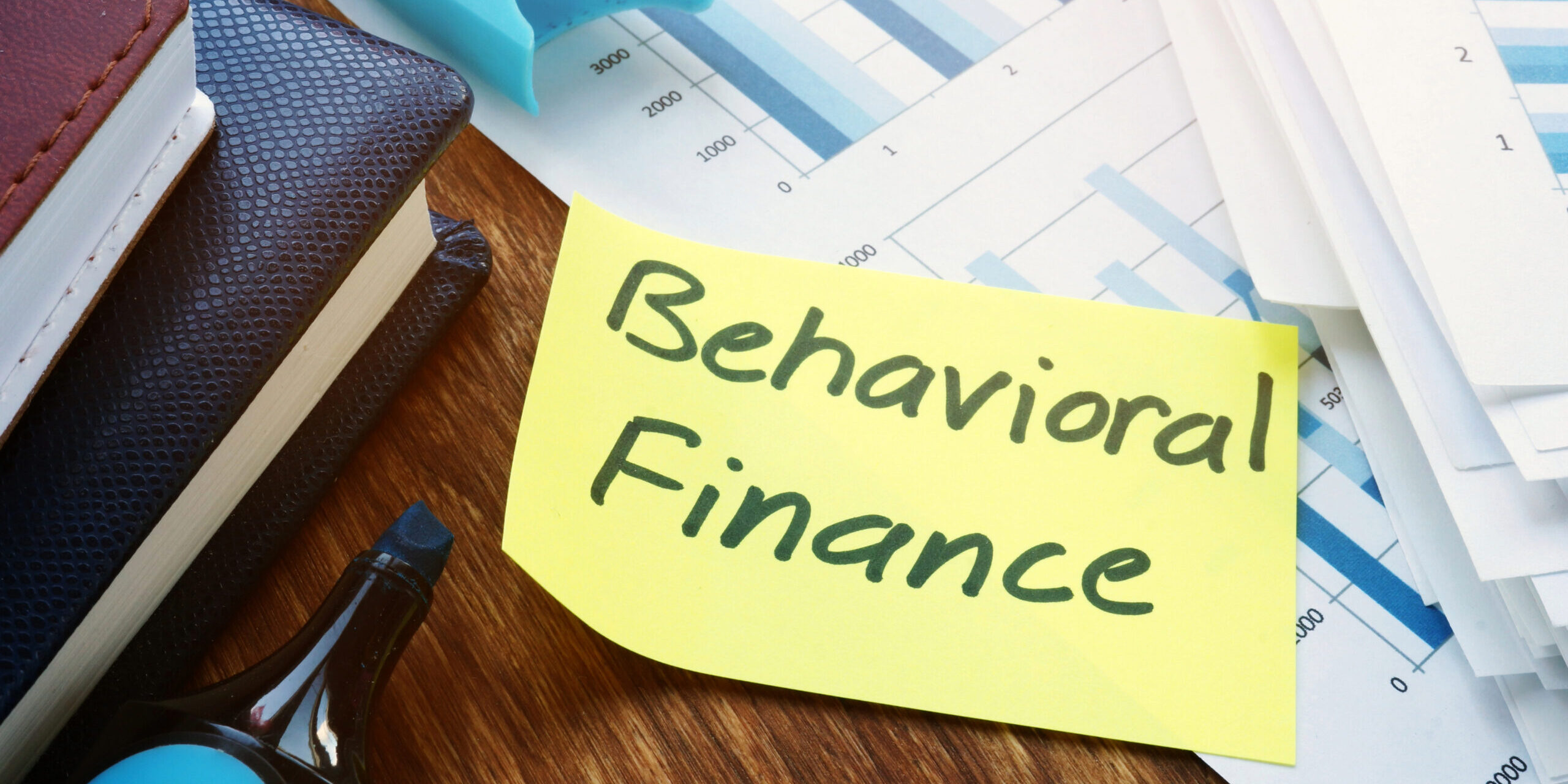The Hidden Forces That Drive Our Financial Decisions: A Deep Dive into Behavioral Finance
 When we talk about money, we like to believe we’re being rational. We crunch the numbers, weigh the options, and make decisions we think are based purely on logic. But anyone who’s ever bought a stock on a hunch or held onto a losing investment “just in case” knows that money decisions are anything but rational. That’s where behavioral finance comes in a field that combines psychology and economics to explain why we often act against our own financial best interests.
When we talk about money, we like to believe we’re being rational. We crunch the numbers, weigh the options, and make decisions we think are based purely on logic. But anyone who’s ever bought a stock on a hunch or held onto a losing investment “just in case” knows that money decisions are anything but rational. That’s where behavioral finance comes in a field that combines psychology and economics to explain why we often act against our own financial best interests.
I came across behavioral finance in a quiet moment one of those rare pauses in life when you’re not just chasing goals but questioning them. I was revisiting a few financial mistakes I had made over the years: the house I overpaid for, the tech stock I held too long, the emergency fund I never quite built. These weren’t due to lack of knowledge. I had read all the books, followed the gurus, and tracked my spending meticulously. So what went wrong?
Behavioral finance gave me the language and the lens to understand.
What Is Behavioral Finance?
At its core, behavioral finance studies how psychological biases and emotional reactions impact financial decisions. Traditional finance assumes we are “rational actors” who always make logical choices to maximize utility. But behavioral finance says: not so fast.
Humans are predictably irrational. We use mental shortcuts, known as heuristics, and fall into cognitive traps that affect our ability to make objective decisions. These tendencies are not random; they’re systematic and often deeply rooted in our evolutionary wiring.
The field gained mainstream attention through the work of psychologists Daniel Kahneman and Amos Tversky, who demonstrated how people deviate from rationality in consistent ways. Kahneman’s book Thinking, Fast and Slow is often considered the unofficial bible of behavioral finance.
Loss Aversion Why Losses Hurt More Than Gains Feel Good
Imagine you invest $1,000, and your portfolio drops to $800. How would you feel? Probably sick to your stomach.
Now imagine it climbs to $1,200. Happy? Sure, but probably not as intensely as the pain of losing the $200.
This is loss aversion, the idea that losses hurt about twice as much as gains feel good. It’s one reason people sell winners too soon and hold onto losers too long. Our brains are hardwired to avoid pain even if it means missing out on potential rewards.
In investing, this can lead to suboptimal decisions. You might avoid higher-return assets because you’re too focused on the risk of loss. Or you might refuse to cut a losing stock because selling would force you to acknowledge the mistake.
Overconfidence The Illusion of Control
Another key insight from behavioral finance is how overconfident we are especially when it comes to money.
We believe we can predict the market, time our trades, or pick the next big winner. Study after study shows that amateur investors consistently overestimate their ability to outperform the market. Even professionals aren’t immune.
Overconfidence leads to excessive trading, which erodes returns over time due to fees, taxes, and just plain bad timing. It’s also why many investors ignore diversification, thinking they “know better” than the broad market.
Being aware of this bias can be humbling but also empowering. It reminds us to question our assumptions, slow down, and revisit the data before making big moves.
Herd Mentality Following the Crowd Off a Cliff
Remember GameStop? Or the dot-com bubble? Or the housing crash of 2008?
These are classic cases of herd behavior, where investors pile into an asset simply because everyone else is doing it. It feels safer to be part of the crowd, especially when the crowd seems to be making money.
But herd mentality often leads to bubbles. Prices get inflated beyond intrinsic value, and when reality sets in, the correction is brutal.
Behavioral finance teaches us to be skeptical of groupthink. Just because “everyone” is buying doesn’t mean you should. In fact, that might be the exact moment to pause and ask, Why am I really doing this?
Mental Accounting Not All Dollars Are Treated Equally
This one hit me personally.
I once received a small inheritance and treated it like “free money.” I spent it on a luxury trip I never would have financed out of my regular income. In hindsight, I regret it not the trip, but the mindset.
This is mental accounting, where we categorize money differently depending on its source. We treat tax refunds, bonuses, or windfalls more frivolously than our salary even though a dollar is a dollar.
This mental trap leads to poor financial discipline. A smarter approach is to consider all income as part of your total financial picture and allocate it based on priorities, not feelings.
Present Bias – Choosing Now Over Later
Present bias is our tendency to prioritize immediate rewards over long-term benefits. It’s why we skip saving for retirement in favor of buying the new iPhone. It’s why debt is so seductive and compounding so underappreciated.
In evolutionary terms, this made sense. Our ancestors didn’t have the luxury to think decades ahead. But in a world of long-term financial planning, present bias is a dangerous saboteur.
Behavioral finance suggests strategies like automatic savings, friction, and commitment devices to overcome this. You make it harder to spend impulsively and easier to stick to long-term goals.
Bridging the Gap: From Knowledge to Behavior
Perhaps the most important insight from behavioral finance is this:
Knowing what to do is not the same as doing it.
Financial literacy is necessary, but not sufficient. You can understand interest rates, risk, and diversification and still make bad decisions if your behavior isn’t aligned with your knowledge.
The solution isn’t to become emotionless. It’s to build systems that account for your humanity. That might mean:
- Setting up automatic contributions so you don’t rely on willpower.
- Creating “cooling-off” periods before big purchases.
- Working with a financial advisor who can challenge your assumptions.
- Journaling your decisions to spot patterns and biases.
Behavioral finance doesn’t promise perfection. But it offers awareness and awareness is the first step to change.
Why It Matters More Than Ever
We live in a world of infinite choice and constant noise. Markets are faster, media is louder, and temptations are everywhere. In this landscape, the investor’s biggest challenge isn’t knowledge, it’s self-control.
Behavioral finance gives us the tools to navigate this complexity with humility and discipline. It doesn’t pretend we can outsmart our instincts, but it helps us design lives where we don’t have to.
Because in the end, wealth isn’t just about numbers. It’s about the ability to make choices that reflect your values, not your fears. It’s about building a future not ruled by impulse or regret.
Understanding your own mind is the most valuable investment you can make.
Finance isn’t just about spreadsheets. It’s about people. And people are messy, emotional, and full of contradictions. That’s not a flaw, it’s a feature.
By embracing behavioral finance, we stop trying to be perfectly rational and start striving to be intelligently emotional, aware of our quirks, anchored by discipline, and guided by purpose.
And that’s where real wealth begins.






